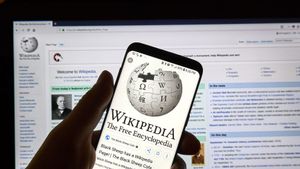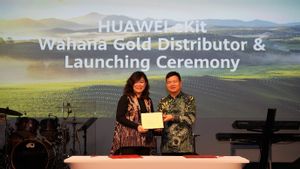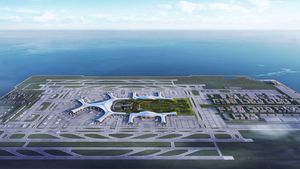JAKARTA - Deep-sea research in Indonesia is still something that is frontier and has not been done much. Yet many potential marine minerals can be exploited. The Agency for the Assessment and Application of Technology (BPPT) is now supporting increased deep-sea exploration research to maximize the existing potential.
"This is certainly a challenge for all of us to be able to conduct a comprehensive study of the potential of deep-sea resources including mineral deposits where in Indonesia there is still not much done", said Head of BPPT, Hammam Riza, in a virtual seminar with the theme "Deep Sea Mineral Exploration in Indonesia: Potential, Policy, Challenges and Technology" in Jakarta, Thursday.
The potential of deep-sea minerals in Indonesia can be indicated so that it becomes a common challenge to be able to create a research and innovation ecosystem related to a comprehensive study of the potential of deep-sea resources and their commercialization.
Hammam said it was necessary to strengthen the synergy between academics/research actors, business, and government to build a knowledge-based ecosystem that supports the exploration and utilization of deep-sea minerals.
Hammam also said that the Ocean Research Consortium which had been initiated by 15 ministries/institutions and universities could be the first step to form a stronger marine research and innovation ecosystem in the future.
Government research institutions that have a strong research and innovation infrastructure can be used together in a consortium. Meanwhile, universities can play a major role in helping to strengthen the quality of research and innovation.
According to Hammam, with the National Research and Innovation Agency (BRIN) carrying out the function of implementing direction and synergies in the preparation of plans, programs, budgets, and scientific and technological resources in the fields of research, development, assessment, and application, in the future the marine research ecosystem is expected to run better.
BACA JUGA:
Currently, three types of deep-sea mineral deposits are known and are the main targets of exploration to be upgraded to the exploitation stage. The three types of mineral deposits are Sea Floor Massive Sulphide (SMS) and Hydrothermal Vein which can be found on the mid-oceanic ridge as well as in the back-arc, Polymetallic Nodules which are located on the abyssal plain, and Cobalt crust which can be found on seamounts.
BPPT, on its journey with the Baruna Jaya research vessel fleet, has been involved in scientific surveys with domestic and foreign ministry/institution partners several times to find out the potential of deep-sea minerals.
For example, the last deep-sea research in 2010 in collaboration between Indonesia and the United States within the framework of The Indonesia-USA Exploration for Sangihe Talaud Program on 6 July–9 August 2010 or INDEX SATAL 2010 using the Baruna Jaya IV Research Vessel has carried out various marine research topics. in the waters of Sangihe and Talaud.
In joint research with NOAA's Okeanos Explorer Ship, the United States, the Hydrothermal Vent area has been found. Previously in the 2000-2001 period, the BANDAMIN Survey and the Bone Bay Survey using the Baruna Jaya III Research Ship also succeeded in indicating the presence of marine minerals in the form of manganese nodules in the Banda Sea and potential gold minerals in Bone Bay. These all show evidence that the potential of deep-sea minerals is found in Indonesian waters.
The English, Chinese, Japanese, Arabic, and French versions are automatically generated by the AI. So there may still be inaccuracies in translating, please always see Indonesian as our main language. (system supported by DigitalSiber.id)


















